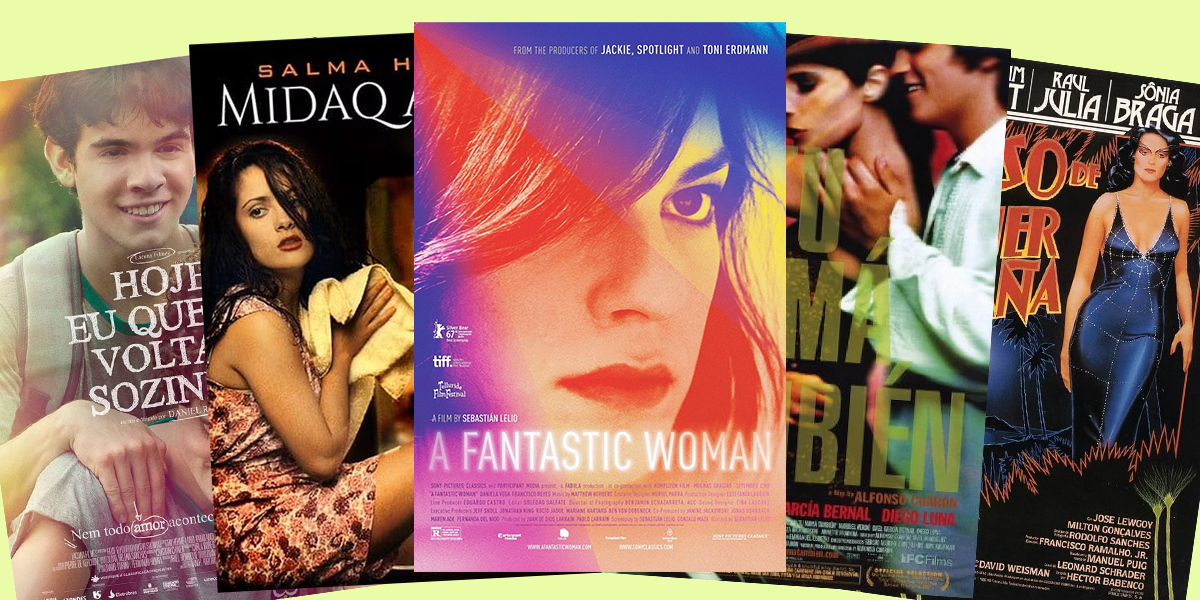When we talk about LGBTQ cinema, many immediately think of Brokeback Mountain (2006) or The Birdcage (1996). While cinema and audiences have opened their minds to sexually diverse narratives in recent decades, the genre is relatively new – at least in English. While the infamous Motion Picture Production Code and changing morays may have stifled queer stories in Hollywood, things happened differently in LGBTQ Latin American cinema.
While Fernando de Fuentes’ La Casa del Ogro (1939) already featured a “gossipy” and “funny” character making nods to homosexuality, in the second half of the century, LGBTQ stories were told in the open. Despite the military dictatorships that undermined the continent during the 1960s and 1970s, or perhaps precisely because of it, LGBTQ narratives in literature, theater, and film were prolific.
One need only look at Mexican director Arturo Ripstein’s feature film El Lugar Sin Límites (1978). Based on the novel by Chilean José Donoso, it follows the life of La Manuela, a middle-aged transvestite who also uses her house as a brothel. El Lugar Sin Límites was the first Latin American film to feature a kiss between two men.
From then on, Latin American LGBTQ cinema has focused on telling the stories as they are, without allegories, demonstrating its closeness to real life as in so many other arts. To learn more, check out these must-see films in LGBTQ Latin American cinema:
El Beso de la Mujer Araña (1985)
The Brazilian film was directed by Hector Babenco and adapted from the novel of the same name by Argentine writer Manuel Puig. The story follows the story of two people imprisoned in a Brazilian penitentiary. One describes himself as an apolitical “faggot” and perceives himself as a woman. The other is a leftist, heterosexual, homophobic politician. The film premiered at the 1985 Cannes Film Festival, and Babenco was nominated for the Palme d’Or.
Fresa y Chocolate (1994)
Fresa y Chocolate is one of the most influential films in the history of LGBTQ Latin American cinema. The Cuban-Spanish-Mexican co-production was directed by Tomás Gutiérrez Alea and Juan Carlos Tabío. Set in Havana in the late 1970s, Fresa y Chocolate tells the story of the friendship between David and Diego. The film interweaves communist persecution of homosexuals, Cuban intellectual circles, and the love between two men. It was the first film representing Cuba to win the Best Foreign Film category nomination at the 1994 Academy Awards.
El Callejón de los Milagros (1995)
Based on Naguib Mahfouz’s novel of the same name, El Callejón de los Milagros was the first Mexican film to bring to the forefront the repressed homosexuality behind machismo. It was also one of Salma Hayek’s first films, starring alongside las primeras actrices Delia Casanova, María Rojo, and Margarita Sanz. It is considered one of the best Mexican films of all time by IMDb.
No se lo Digas a Nadie (1998)
Another iconic example of LGBTQ Latin America cinema is Francisco Lombardi’s Peruvian No se lo Digas a Nadie (Don’t Tell Anyone). The film follows the story of Joaquín Camino, a bisexual young man from Lima’s high society, who navigates his homosexuality among a group of Opus Dei youth. The film was initially censored in Peru.
Plata Quemada (2000)
Likewise, Latin America was quick to talk about homosexuality in criminal circles. Plata Quemada, directed by Marcelo Piñeyro, tells the story of Los Mellizos, a duo of delinquents who maintain a close sentimental and loving relationship.
La Virgen de los Sicarios (2000)
For its part, Colombian cinema counted La Virgen de los Sicarios as its first openly LGBTQ film. It’s a quasi-documentary based on the autobiographical novel by writer Fernando Vallejo. The film narrates the experiences of Fernando, a homosexual writer who returns to Medellin after years of absence and begins a sentimental relationship with Alexis, a 16-year-old hitman.
Y Tu Mamá También (2001)
Mexican cinema inaugurated the 21st century with a film that has gone down in the history books as one of the best examples of auteur cinema. Directed by Alfonso Cuarón, Y Tu Mamá También follows the story of Tenoch Iturbide and Julio Zapata, played by youngsters Diego Luna and Gael García Bernal. The story combines social issues and highlights sexual diversity among young people.
Azul y No Tan Rosa (2012)
Although Venezuela has a long film history, it was not until 2012 that the subject of homosexuality was openly addressed. The film Azul y No Tan Rosa, directed by Miguel Ferrari, showed the true facets of homosexuality, transsexuality, and gender violence in the country. And it won the Goya Award for the best Spanish-American film of 2013.
Hoje Eu Quero Voltar Sozinho (2014)
When it comes to LGBTQ gender and disability in film, Brazil leads the way. Hoje Eu Quero Voltar Sozinho (Today I Want to Go Home Alone) tells the story of Leonardo, a blind high school student fighting for his independence. In a story full of tenderness, Leo finds love in a new student at school.
Esteros (2016)
Another Argentine film that should not be missing is Esteros. Directed by Papu Curotto, it is a romantic drama about two childhood friends who meet ten years later to discover that the feelings they had as children have followed them into adulthood.
Una Mujer Fantástica (2017)
Finally, Chile gifted the world the first film about a transgender woman to win an Oscar for Best Foreign Language Film. A Fantastic Woman, directed by Sebastián Lelio, tells the story of Marina, a transgender woman who is accused of the death of her partner and society’s harsh attacks.

